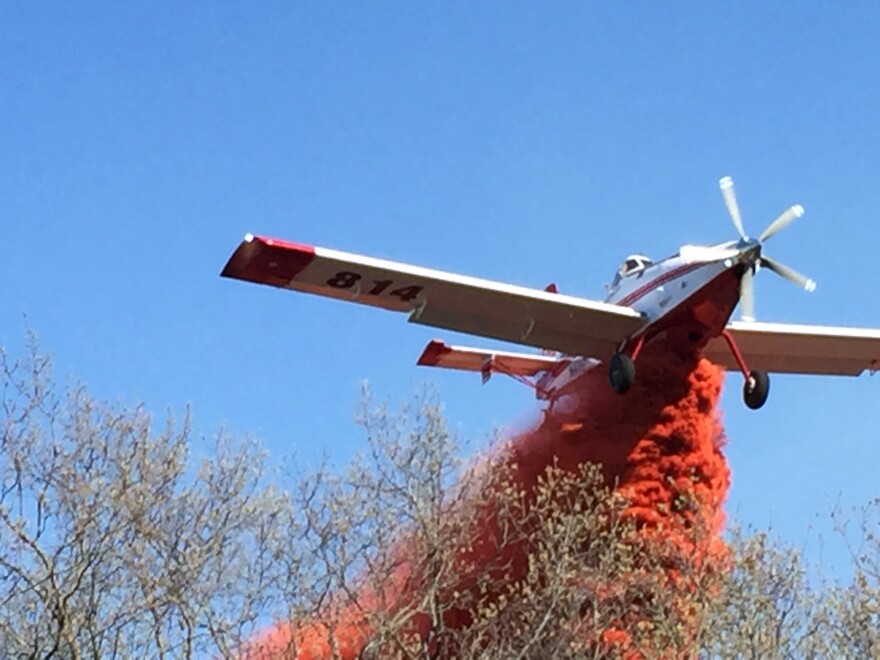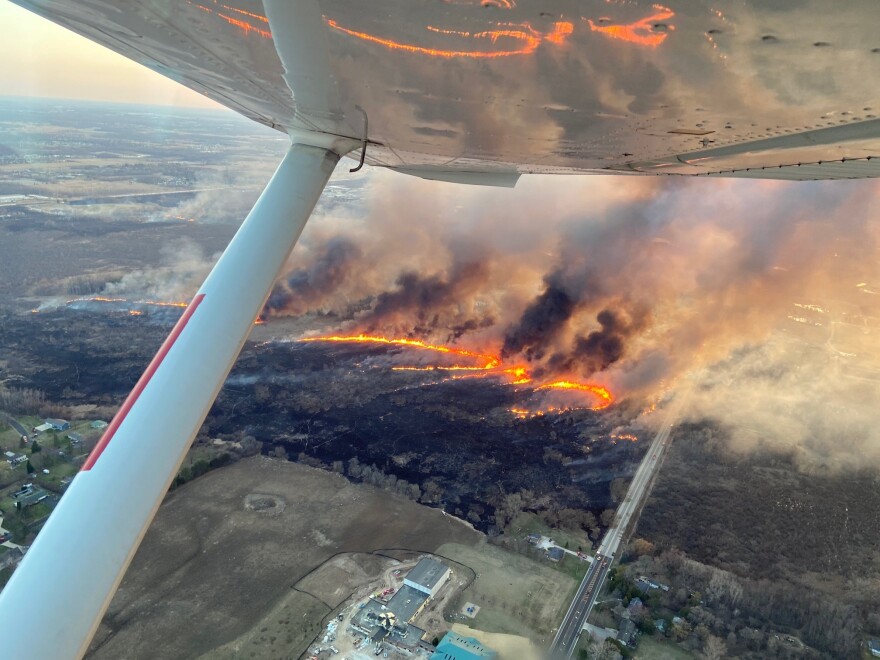There’s been more than 620 fires recorded in Wisconsin so far this year. More than 1,700 acres have burned.
For comparison, in the same time frame last year there were 368 fires and less than a third as many acres burned.
John A. Jorgensen is the aeronautics team leader for the DNR. He said it’s not necessarily the number of fires that makes this fire season unique, but the length of the season and how widespread fire risk is.
“It’s been long and it’s been particularly dry. The last two or three years were pretty wet, but this year we haven’t had that much rain and particularly now we find ourselves very, very dry across the whole northern tier of the state,” said Jorgensen.
Jorgensen spent the weekend in Solon Springs coordinating air response to fires.
Typically, the DNR uses its aircraft in a detection role.
“We have predetermined fire routes, the airplanes fly around the areas that they’re patrolling in. When they find a fire they call that into dispatch or dispatch calls it into us if they learn about it in a different way. We go over the top in our single engine Cessna airplanes and size up the fires,” he said.
Dispatch will send the needed ground crews to the fire. The airplane will usually stay overhead to help relay information to those crews.

Unique this year, according to Jorgensen, the DNR has contracted out five SEATs. SEATs are Single Engine Air Tankers.
With the SEATs, the DNR is able to quickly get eyes on the reported fire and get the ground support that’s needed.
The added bonus of this type of aircraft, compared to the single engine Cessna’s the DNR also uses to spot fires, is that the SEATs can directly fight the fires.
“They carry 800 gallons of product. We add a chemical gel, kind of like a shaving cream, and they’re able to drop that. That’s a retardant to help the water that drops be more effective and help contain the fire,” said Jorgensen.
Jorgensen said that works well the DNR’s quick initial attack policy when it comes fighting wildfires.
“The whole idea is to get to them as fast as possible. Get the overhead support, the SEAT aircraft in, they can drop and hopefully keep that fire small so the that the crews on the ground can mop up, make sure its secure and everybody can be ready for the next incident when it happens,” said Jorgensen.
The DNR places resources at different points across the state so that it can quickly respond to fires even if there are multiple fires happening at the same time.
FIRE SAFETY TIPS FROM THE DNR
- Check before you burn; burn permits for debris burning will likely be suspended in several counties over the coming days until conditions improve.
- Operate equipment (chainsaws, off-road vehicles, lawn mowers, etc.) early in the morning or late in the day to avoid sparks at peak burn hours.
- Secure dragging trailer chains.
- Delay having campfires until the evening hours as fire conditions tend to improve; keep them small and contained.
- Report fires early, dial 911.







